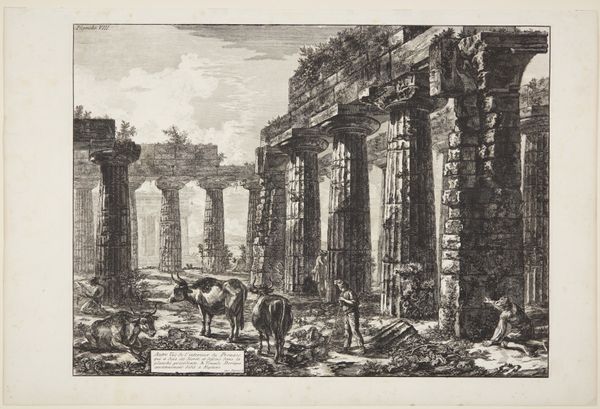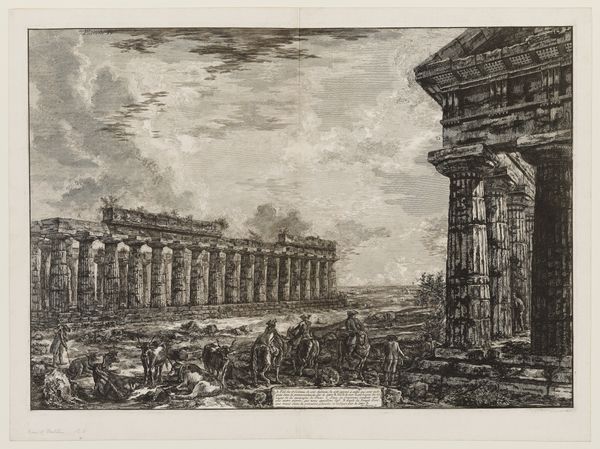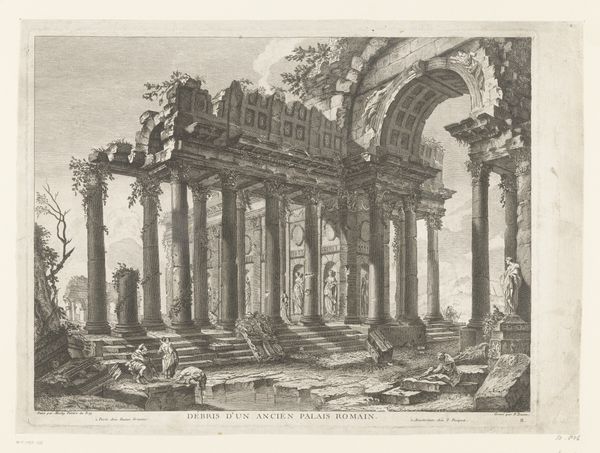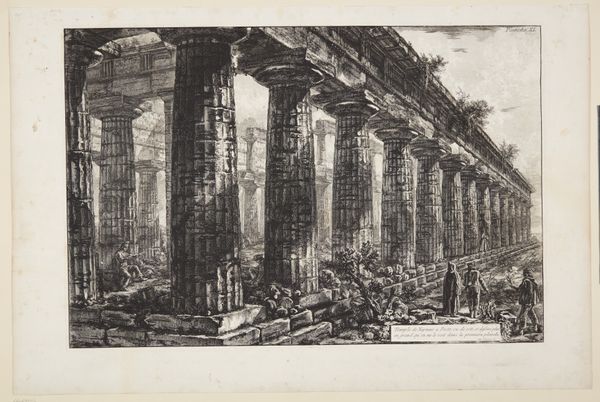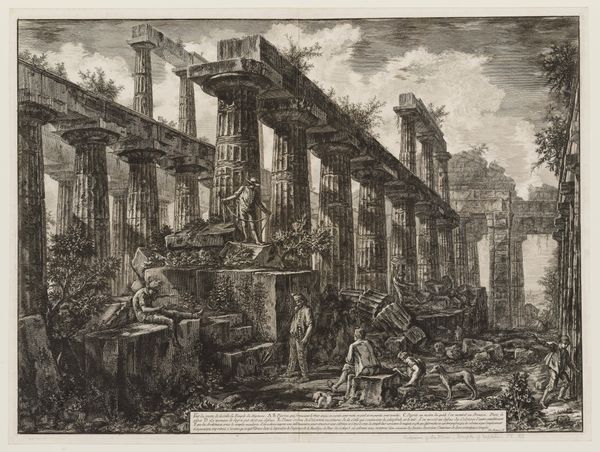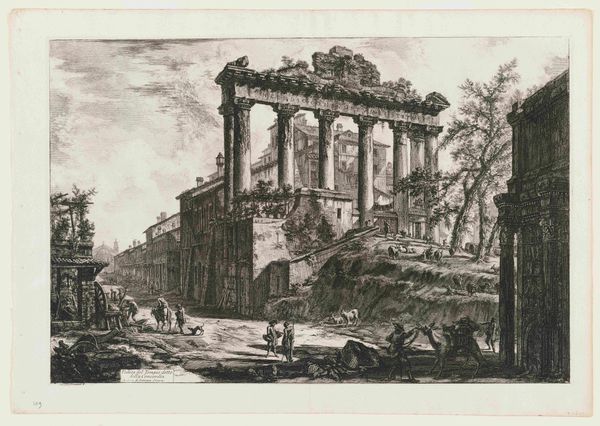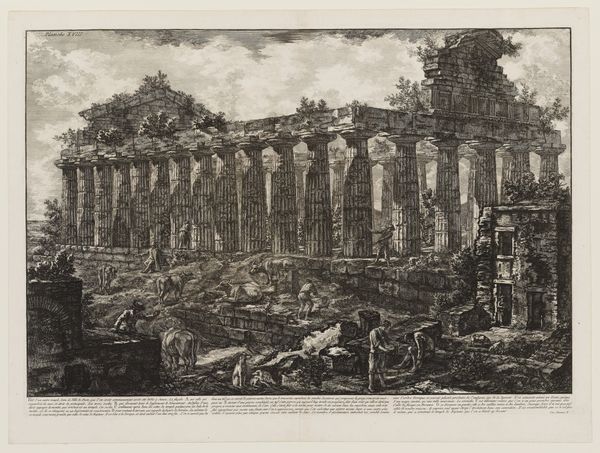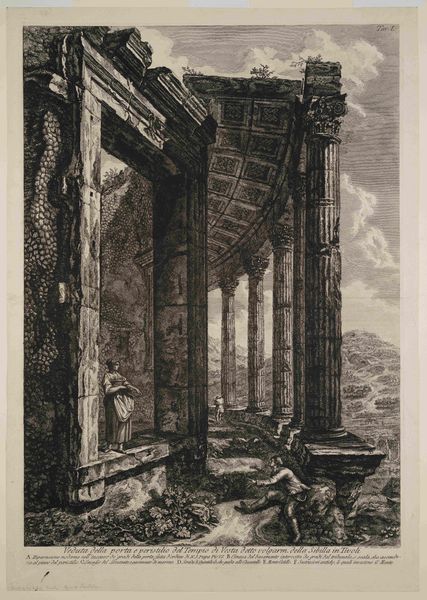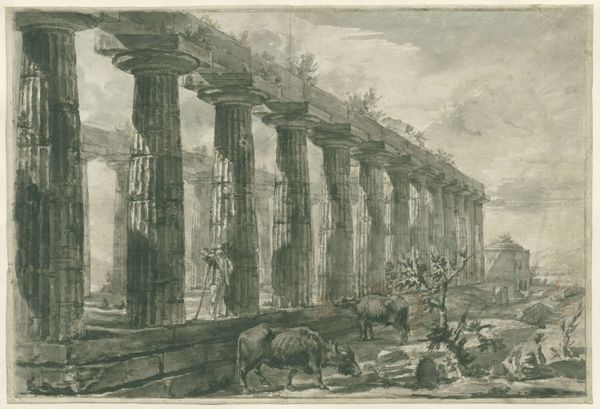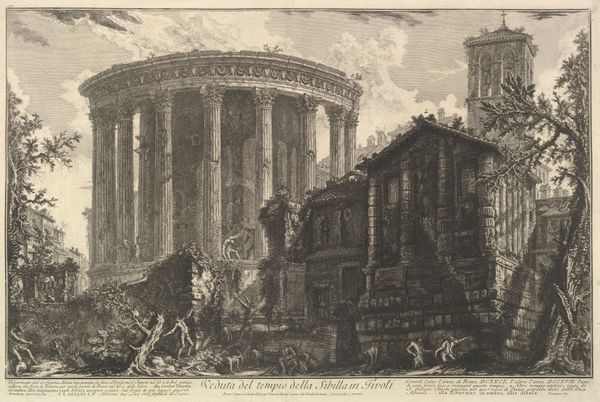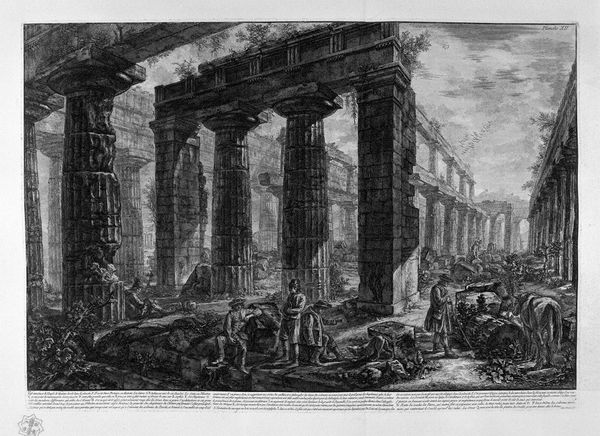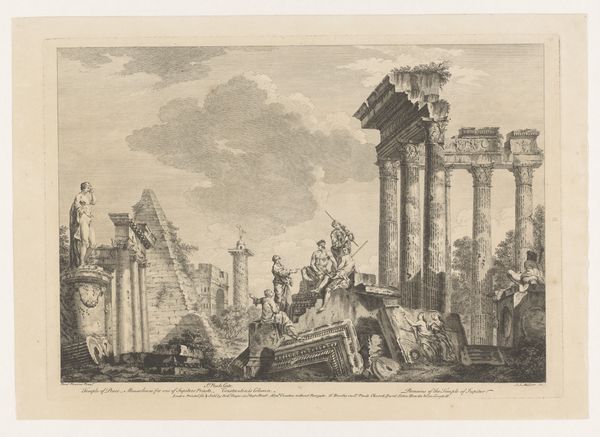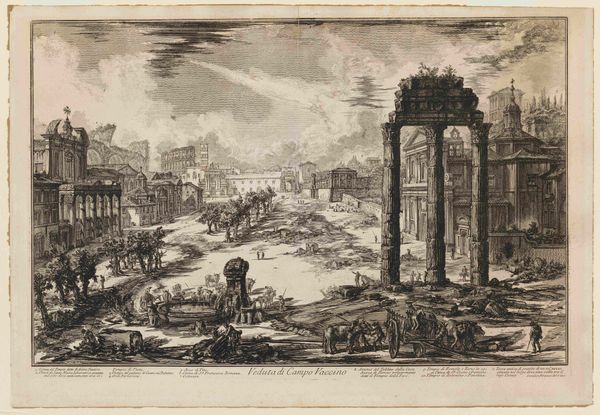
print, etching, engraving, architecture
#
neoclacissism
# print
#
etching
#
landscape
#
classicism
#
history-painting
#
engraving
#
architecture
Dimensions: 19 x 26 7/8 in. (48.26 x 68.26 cm) (plate)21 x 28 5/16 in. (53.34 x 71.91 cm) (sheet)
Copyright: Public Domain
Editor: Here we have Giovanni Battista Piranesi's "Interior-Temple of Neptune," an etching from the 18th century. I find the decay and sheer scale of the architecture pretty overwhelming. What do you see in this piece? Curator: Beyond the impressive rendering of space, I see Piranesi engaging in a specific dialogue with his contemporary moment. Remember the Enlightenment and its fascination with the classical world? Prints like these weren’t just about aesthetics; they were about shaping a collective understanding of history and power. Editor: So, it’s not just a picture of ruins? Curator: Precisely! It's about the grand narrative of civilizations, of rise and fall. The temple isn't simply presented as ruined; its scale and visual drama are exaggerated. Consider the tiny figures, dwarfed by the architecture, a deliberate strategy to emphasize the might of the past, and perhaps, implicitly, to critique the present. Editor: How would displaying these images have affected public perception? Curator: Mass-produced and relatively inexpensive, Piranesi's prints made the grandeur of Rome accessible. This democratized exposure influenced architectural tastes and contributed to the rise of Neoclassicism, essentially shaping the visual language of power across Europe and beyond. This print becomes a tool in constructing a certain kind of cultural identity, tied to a specific lineage. Editor: I see. It’s fascinating how a print could carry so much cultural weight and influence. I will certainly think about art in terms of its historical and social impacts. Curator: Exactly, and it is key to consider the politics of display in understanding how the artwork affects its cultural reception.
Comments
No comments
Be the first to comment and join the conversation on the ultimate creative platform.
